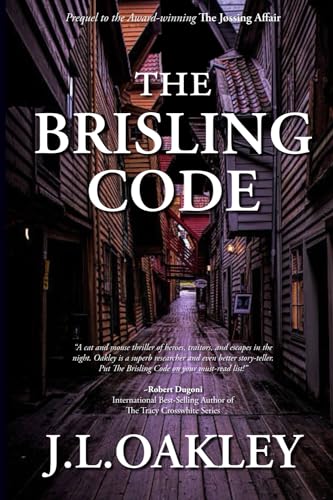The Brisling Code
A Resistance operative in 1942 Bergen taps out his final words on the telegraph to London before the Sicherheitsdienst (SD), the intelligence gathering operation of the SS, shoot him to death: BRISLING. Months later, a pair of intelligence agents make their way to Norway. The mission: to learn the latest about the Wehrmacht’s production of U-boats in the shipyards along the Puddefjorden and the meaning of the wireless message.
The Brisling Code is the latest in Oakley’s award-winning series. Characters are multi-layered with complex personal histories driving actions that endanger their missions. Depictions of clandestine operations, such as the delivery of agents into, and refugees out of occupied Norway, carry tension and the sense of authenticity. The plot delivers a poignant turn of events at the end.
For this reader, however, there is too much telling and not enough showing. Some aspects of the story are presented as matters of fact, rather than suspicions that eventually prove to be revealing. Some incidents are more or less off stage, presented as events said to have happened and not fully described. The reading experience is diluted by not being able to more directly observe and appreciate actions as they occur, piece together elements of the story as they unfold, and follow a step- by-step path to understanding the present and the past.










